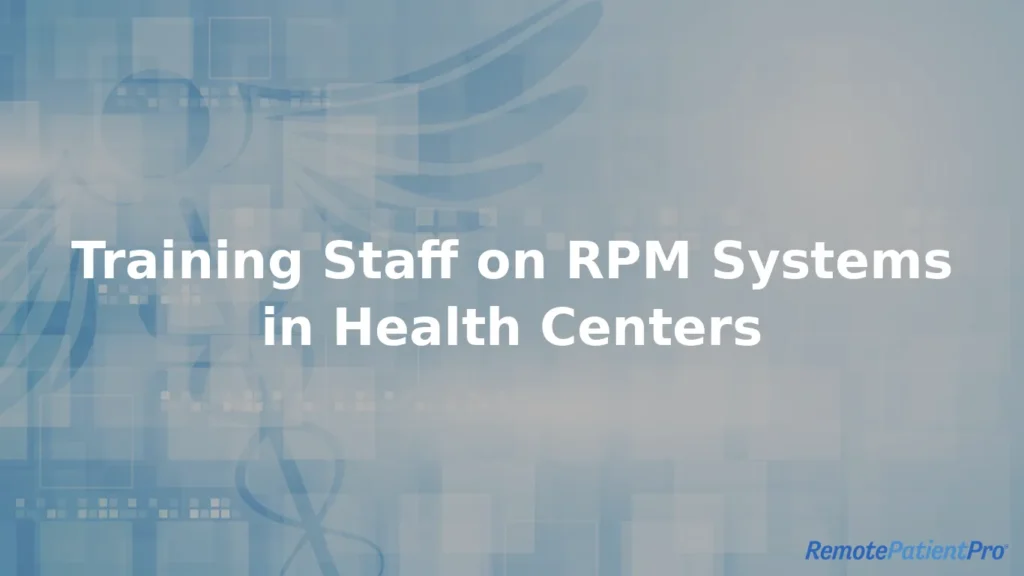Training Staff on RPM Systems in Health Centers
As remote patient monitoring (RPM) systems become essential tools for chronic disease management and patient engagement, Federally Qualified Health Centers must prioritize comprehensive staff training to ensure successful implementation. Without that training, providers may struggle to keep their patient data organized and accessible.
Let’s explore how training staff on RPM systems in health centers can benefit care coordination, established workflows, and patient outcomes.
Why RPM Training Is Essential for Health Centers
- Improved efficiency – RPM reduces administrative burdens by automating patient monitoring through the use of wearable sensors.
- Enhanced patient engagement – RPM helps staff educate their patients on device use and how to understand their recorded vitals.
- Reduced hospital readmissions – RPM allows clinicians to detect early warning signs of deteriorating health.
- EHR integration – RPM lets staff synchronize its data with existing electronic health records.
Best Practices for Training Staff on RPM Systems
Assess Staff Readiness and Training Needs
Before implementing RPM training, health centers should gauge how experienced their team members are with digital health tools in general. Key areas to evaluate include:
- EHR and telehealth experience.
- Data interpretation and patient monitoring protocols.
- Communication skills for remote patient support.
Implement a Structured RPM Training Program
A structured training plan means that clinical and administrative teams understand how to use RPM technology effectively. Training should include:
- Hands-on device demonstrations – Teach staff how to set up and troubleshoot RPM devices.
- EHR and data integration workshops – Guide providers on accessing and analyzing RPM data within existing healthcare systems.
- Patient education techniques – Equip staff with strategies to teach patients how to use monitoring devices properly.
Provide Role-Specific Training
Different healthcare roles require specific training to ensure that all staff members understand their responsibilities.
- Clinicians and Nurses – Focus on interpreting patient data, responding to alerts, and engaging patients in remote care.
- IT and Administrative Staff – Train on system configuration, data security compliance, and troubleshooting.
- Care Coordinators – Confirm that patients understand how to use and maintain their devices.
How RPP’s RPM Platform Supports Staff Training
Our turnkey remote patient monitoring solution simplifies training by offering:
- Intuitive, user-friendly technology that is easy for healthcare teams to adopt.
- Seamless EHR integration to reduce manual data entry and optimize workflows.
- Automated alerts and AI-driven insights to help staff prioritize high-risk patients.
- Dedicated training and support, including instructional guides, live demos, and ongoing staff assistance.
The Importance of Ongoing RPM Education
By investing in proper RPM training, health centers can:
- Improve clinical efficiency and patient monitoring.
- Increase staff confidence in digital health.
- Encourage patients to engage with this technology and their own health care.
Start Training Your Health Center Staff on RPM
A well-trained healthcare team is essential for successful RPM implementation and improved patient outcomes. Investing in structured training ensures staff readiness and long-term success.
Contact us today to learn more about how we can benefit your team, or to schedule a demo of our RPM solution.

